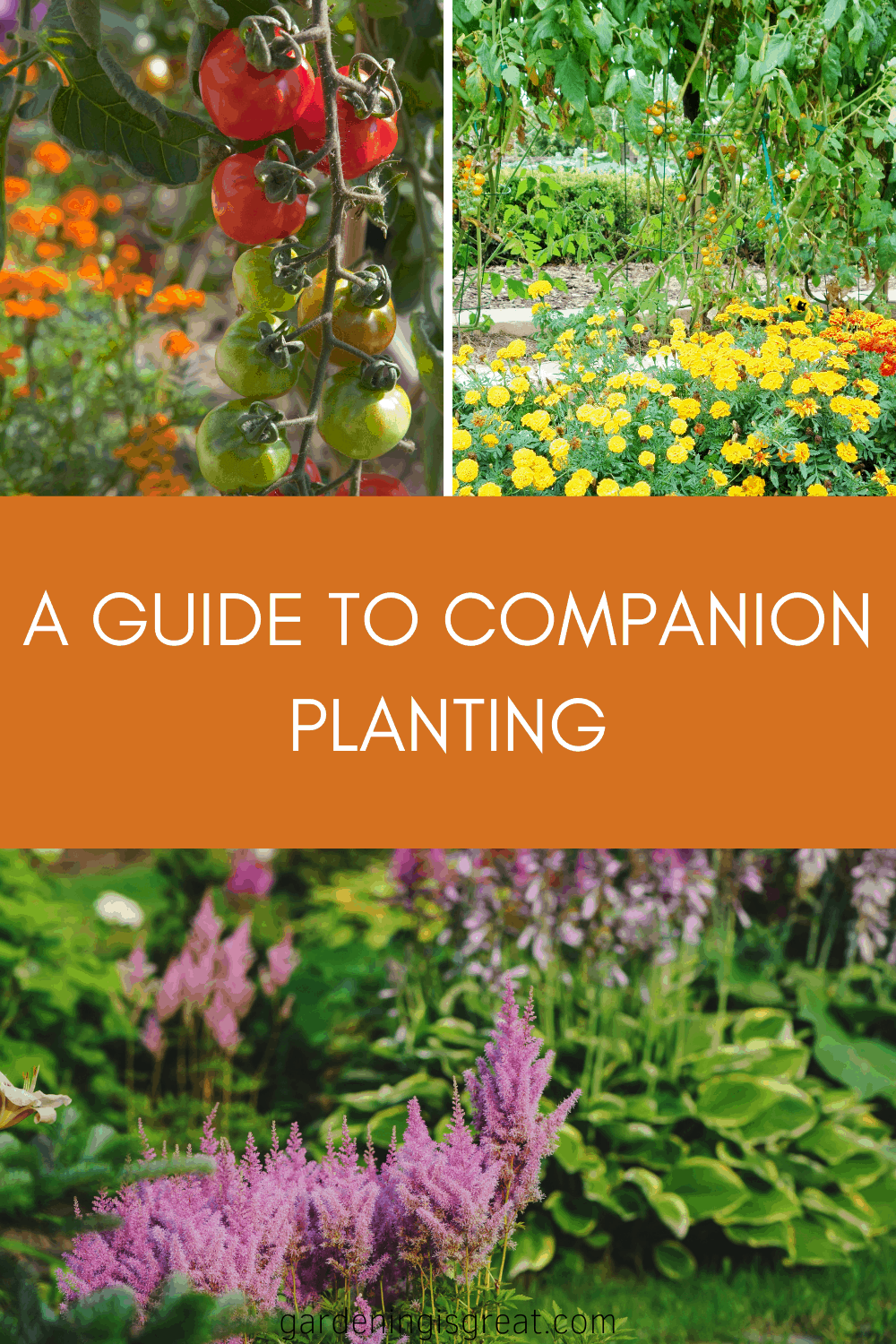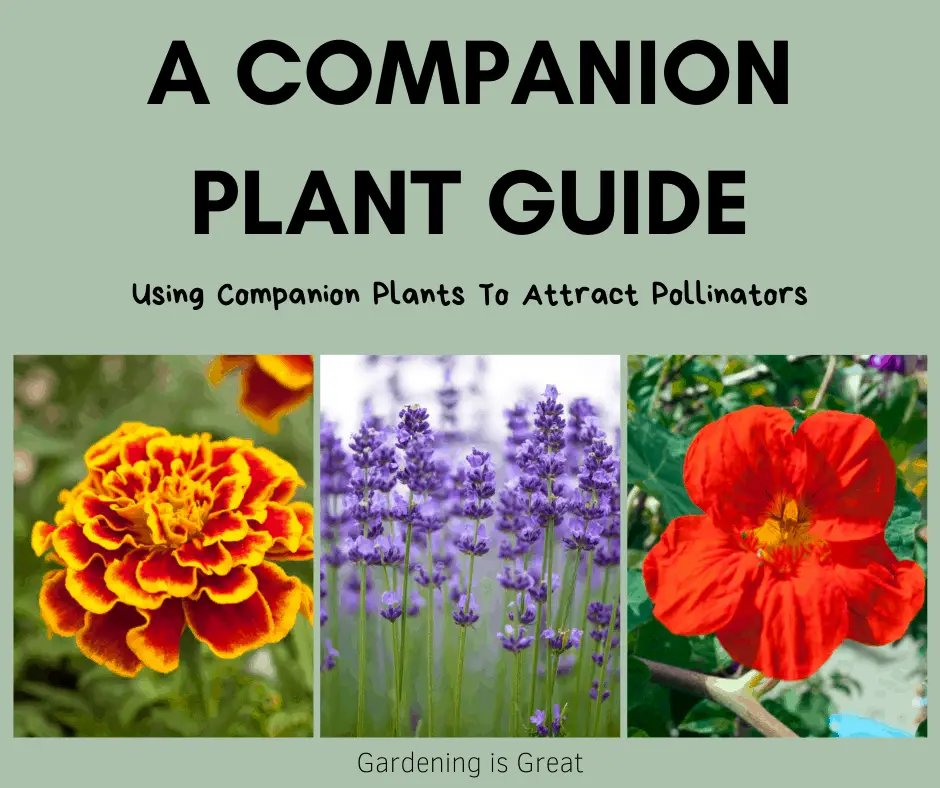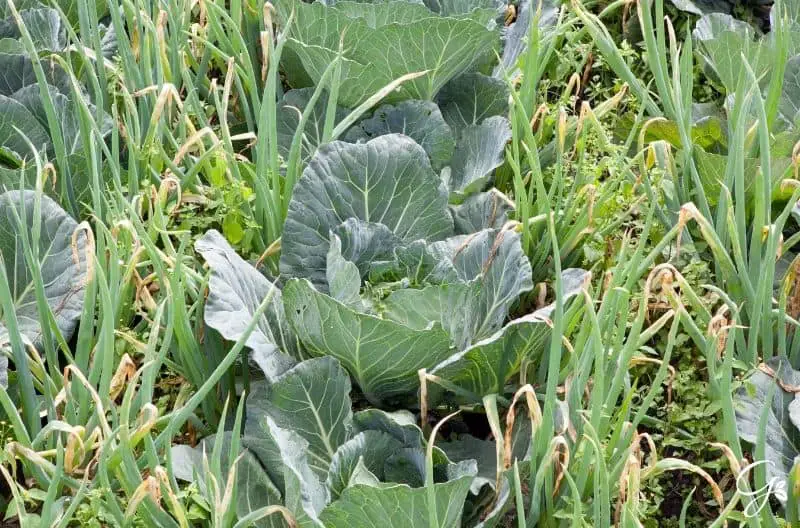A Companion Plant Guide: Using Companion Plants to Attract Pollinators
Many gardeners, beginners or experienced, aim to grow their fruit and vegetables. But many find it a struggle. Perhaps their plants didn’t yield enough crops or they had an outbreak of pests.
Growing your own fruits and vegetables can be challenging, but it doesn’t have to be.
Using companion plants is an excellent method of attracting pollinators to your crops. Through planting the right companion plants to your fruits and vegetables, you will:
- Attract pollinators such as bees, birds, and butterflies into your garden, whilst deterring pests.
- The pollinators will spread pollen and help fertilize your crops.
- Leading to an increase in edible crops throughout the growing season.
If you want to increase your crop production whilst minimizing the effect on the environment, then keep reading this guide on using companion plants to attract pollinators.

What Are Pollinators?
Pollinators are living creatures that help to pollinate plants by transferring pollen. When pollen is transferred between two plants of the same species, it allows the process of fertilization to begin.
The most common types of pollinators are insects such as bees, butterflies, and wasps. However many different creatures such as birds, bats, lemurs, and geckos are also classed as pollinators.
Why Are Pollinators Important?
When pollinators fertilize plants, they enable plants to produce the fruits and vegetables we know and love. Without pollinators, much of the food that we eat today would be a lot harder to produce, and a lot more expensive.
Let’s take a look at bees as an example. Bees contribute to pollinating over 66% of the world’s crop species, and one-third of the food we eat. Plants such as potatoes, carrots, oranges, avocado, and even almonds rely on bees to help spread their pollen and fertilize each plant.
Over the last 50 years, bee populations have been in decline. A study comparing 228 species of bee within the East of England between 1980-2013 found that ⅓ of pollinator species declined.
Without bees and fellow pollinators, there would be a significant impact on the fertilization of plants around the world. This would lead to a rise in food prices and a loss of wildflowers and crops that rely heavily on pollinators.
How Does Using Companion Plants Help Attract Pollinators?
So what can we do as individuals to collectively help increase pollinator numbers where we live?
As gardeners, it is our responsibility collectively to help support local wildlife and ensure our gardens are wildlife-friendly.

Now, I know there is a bit of a grey area when it comes to encouraging wildlife compared with discouraging pests. There are certain creatures (ahem slugs and snails!) that are a gardener’s worst nightmare and you definitely want to avoid an outbreak in your vegetable patch!
But for all intents and purposes, I am talking about pollinators, not pests.
Think of pollinators as your new best friend.
They will support your garden to flourish and grow by spreading pollen from plant to plant and helping to fertilize your fruits and vegetables.
One way to encourage bees and butterflies, along with other pollinators, is by using companion plants.
Companion plants are plants that can be planted in and around your crops. They encourage pollinators to visit your garden whilst not competing with your fruit and vegetable plants for space, sunlight, and nutrients.
With a little bit of careful planning as to which companion plants to choose, doing so will, in turn, help you achieve a better harvest than you would without these plants.
4 Companion Plants You Should Add To Your Garden To Attract Pollinators
As mentioned above, it is really important to take some time to plan carefully which companion plants work best with the crops you are growing.
Not all companion plants will suit every type of crop.
For example, mint is an excellent companion plant to deter pests from your crops. However, if planted directly in the ground could overgrow your crops and take up too much space.
To help ensure you are sourcing the right companion plants for your garden to attract pollinators, take a look at these 4 companion plants below:
Marigolds
Marigolds are beautiful flowers that are suitable as a companion plant for a range of fruits and vegetables such as melon, cucumber, and potatoes.

The key consideration to keep in mind before planting your marigolds is to select one that will not grow larger than your crops. Marigolds can range from 6 inches to 1 meter. So it is a good idea to think about which variety would work best for your garden.
The most common Marigolds used are French marigolds due to their small size. They are ideal for an average garden and vegetable patch. Not only are they loved by bees, encouraging pollinators into your garden. But they also repel whitefly helping to protect your crops.
Calendula is another variety of marigolds loved by gardeners as its flowers are highly attractive to pollinators.
Nasturtiums
Nasturtiums are loved by pollinators, particularly bees and cabbage white butterflies. Growing in a wide range, nasturtiums can be potted near your fruits and vegetables, or some varieties are climbers and can be grown behind your vegetables.
Planting nasturtiums will encourage bees into your garden. They are also a firm favorite for cabbage white butterflies that will lay their eggs on this plant instead of within your crops.
Once hatched the caterpillars will feast on your nasturtiums instead of your fruits and vegetables.
Nasturtiums make excellent companion plants for peppers, tomatoes, cabbages, runner beans, and cauliflower.
Lavender
Lavender is a bee’s best friend. This is an ideal companion plant for attracting pollinators. With its combined strong scent and easy nectar access, bees are highly attracted to lavender.
By planting lavender in amongst your crops, you will encourage bees to visit your garden and help pollinate your plants.

A big bonus of lavender is that because it has such a strong scent it deters aphids which are a renowned pest amongst vegetable growers.
Lavender is an excellent companion plant for lettuce, sage, tomatoes, onions, or basil.
Borage
Similar to lavender, borage is highly attractive to bees and other pollinators such as butterflies. It has a strong scent and bright flowers to attract pollinators.
Borage makes a great companion plant for tomatoes and strawberries. It is even edible itself and is recommended to add to salads and dips as it has a similar taste to cucumber.
Top Tips When Using Companion Plants
The above four plants are excellent companion plants to use in your garden. They will attract pollinators into your garden and help to fertilize your plants. Here are some top tips to help you maximize the available space and the number of pollinators:
- Ensure to plan your crop area. Take into account the space each of your crops needs and which companion plants won’t overgrow and compete with your crops. Some companion plants will also grow quite high and are ideal for providing shade to certain crops that don’t thrive in full sunlight such as lettuce.
- Consider mixing the companion plants you select to grow so that they are spaced out. By planting a variety together, you are limiting the possibility of pests and diseases spreading so quickly.
- Be sure to also plant companion plants that are loved by birds. Birds are natural predators of slugs and snails. Encouraging them to visit your garden will help eliminate pests that are attracted to your crops.

This guide on using companion plants will help you select the right varieties to attract pollinators into your garden. Pollinators are important to spreading pollen and helping to fertilize crops.
Not only that, companion plants can help to deter pests and prevent the spread of diseases among your crops.
By planting companion plants, you are encouraging pollinators to visit your garden. With an increase in pollinators, it should lead to a more successful harvest.
Do you grow fruits and vegetables in your garden? Take a look at these posts to guide you when planting fruit and vegetables:
